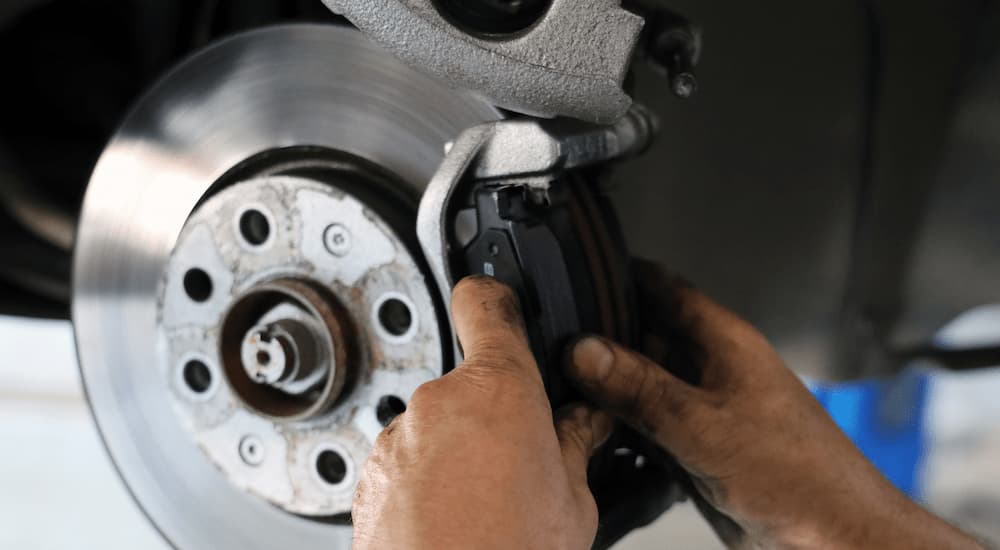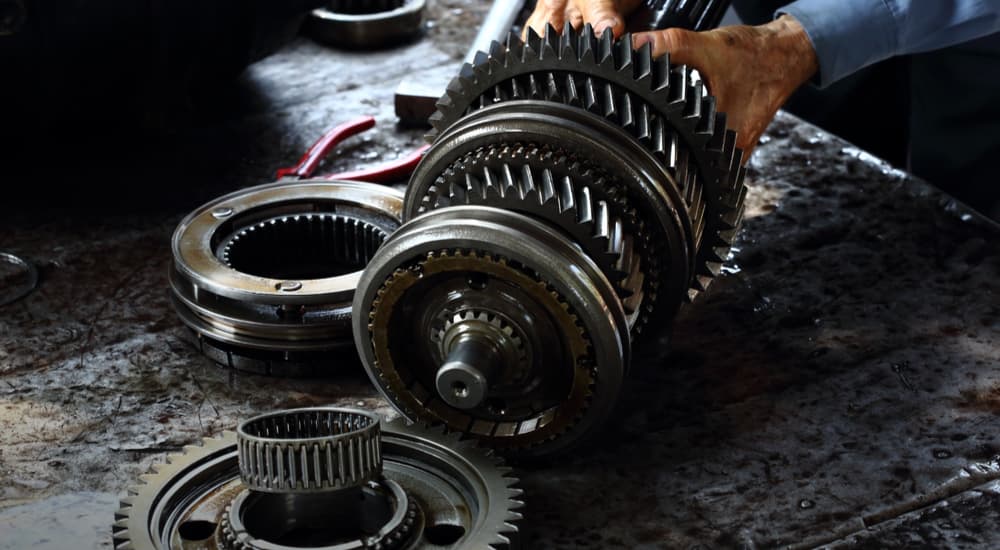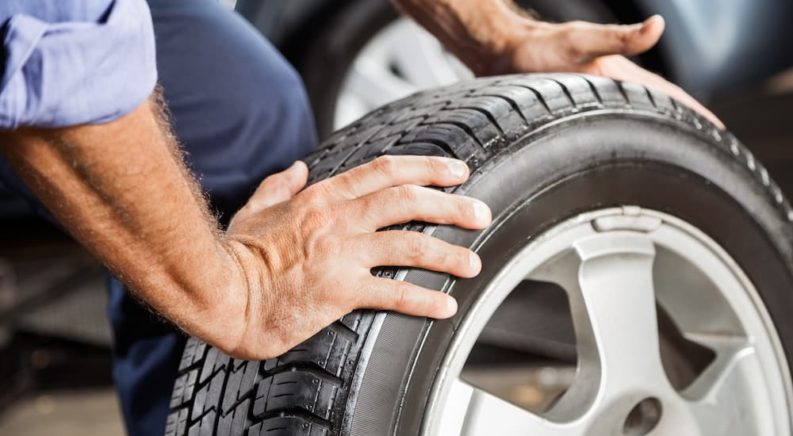You’re driving along and suddenly realize your car is pulling to the right. You think to yourself, it must be the tires because what else could it be? You start that search for a tire store. But what if it isn’t the tires? There are many things that can ruin the quality of your drive. Knowing more about the common problems that can affect your ride will help you save time and money.
#1 – Wheel Balance
Wheel balancing is the process of making sure a tire and wheel have their weight evenly distributed, which helps the wheel and tire to rotate smoothly. When new tires and wheels are mounted on a vehicle, it is important to make sure the tires and wheels are balanced. However, a wheel can become unbalanced at any time and may need to be rebalanced.
To balance a wheel, the mounted tire and wheel are placed on a machine that spins the wheel. The machine will indicate where the wheel assembly needs adjustment, and small weights are added. When a wheel is not balanced properly, it can make it appear that there is something wrong with the tire. It can cause shaking, vibrations, and uneven tire wear.

#2 – Wheel Alignment
One of the most common issues that can impact the quality of your drive is wheel misalignment. Many people don’t realize how important wheel alignment is to their vehicles. Misalignment can cause your tires to wear down quicker, put more strain on your suspension, and even increase fuel consumption. There are three main components that get adjusted when performing a wheel alignment: the camber, the caster, and the toe.
The camber angle refers to the vertical angle of the tire. If the tire is perfectly straight, then there is zero camber. If the top of the tire is tilted inward, there is negative camber. If the top of the tire is tilted outward, there is a positive camber. The ideal camber is dependent on the vehicle and its use.
The next component is the caster, which refers to the angle of the steering axis. A car’s caster is negative when the axis is angled towards the front of the car and positive when it is angled towards the back. For most vehicles, it is normal for the caster to have a negative or positive value.
The third component is called toe, which is the direction that the tires point when viewed from above. Toe-in means the tires point towards each other, while toe-out means they point outwards. Most cars will have a small amount of toe-in to make them more stable and easier to handle.
One obvious sign that your vehicle needs a wheel alignment is if your vehicle is pulling to one side. When your vehicle is pulling to one side, it is most likely caused by the toe needing adjustment. Since toe refers to the physical direction the tires are pointing, it makes sense that the vehicle would follow the direction of the tires.
The other main sign you may need a wheel alignment is if your tires are wearing unevenly or at an abnormal rate. Uneven wear can show up in several ways. Shoulder wear, center wear, feathering, cupping, and patch wear are all signs that you need an alignment.
If your vehicle does not drive straight or your tires are wearing abnormally, it can greatly impact the quality of your drive. You could experience vibrations, less control while steering, poor gas mileage, or even an accident. Alignments are recommended every six months, after suspension work, or when replacing tires. It is highly recommended that wheel alignments are done by professionals, as these are not easy to perform without the proper tools and education.
#3 – Suspension
One main component of a vehicle’s suspension that can impact how a car rides is the shocks and struts. Shocks and struts are designed to absorb impacts. When shocks and struts are worn out, going over a pothole or a bump can make your entire car feel the effect.
Although shocks and struts accomplish the same thing, they are two separate components that work within the suspension system. Your vehicle may have shocks, struts, or both shocks and struts. Many vehicles have shocks on one axle and struts on the other.
Too much bouncing, unabsorbed road impacts, and noises while in motion can all be signs that you need to replace your shocks and struts. Worn suspension components can ruin the way your vehicle drives and can put a strain on other parts of your vehicle. Tires can also be impacted by worn shocks and struts, causing them to wear unevenly and forcing you to replace them sooner.
There are other components within the vehicle’s suspension system that can cause disruptions to how it drives. Control arm bushings and ball joints are separate pieces of hardware that are part of the control arm assembly. Excessive front-end shaking or wobbling while driving can be a sign that either or both parts require replacement.
Damaged suspension springs can also create problems with how your vehicle absorbs impacts from bumpy or uneven ground. There are different types of springs depending on the vehicle. Coil springs and leaf springs are the two most common for cars and trucks. Vehicle sag, bottoming out, and poor impact absorption are all signs that the springs need to be replaced. A broken spring can cause binding within the suspension system.

#4 – Brakes
If there is a problem with your vehicle’s braking system, the vehicle could experience shaking, wobbling, steering wheel vibration, pulling to one side, abnormal noises, extended stop times, and of course, brake failure. If you experience any of these signs, it is vital to get the brakes checked immediately.
There are two braking systems that may be used in a vehicle: drum brakes and disk brakes. Many people are only familiar with disk brakes, as drum brakes have been largely phased out in consumer vehicles. However, they can still be found in many commercial trucks, including tractor-trailer units. Drum brakes have the potential to last longer than disk brakes, but they can be more complicated to repair or replace.
Disk brakes consist of a caliper, brake pads, and a rotor. The caliper compresses the pads against the rotor to apply pressure which then causes the vehicle to slow or stop. Drum brakes use what is called a drum, which is a cylindrical part that rotates with the brake shoe inside. The shoe is pressed against the inside of the drum to slow the vehicle.
Two main problems can occur with disc brakes: the rotors can warp, and the brake pads can become worn. Rotors can be resurfaced if there is enough material to do it safely. This is also called machining or “turning” rotors. If there is not enough material remaining, the rotors will need to be replaced. If the brake pads are worn out, they will have to be replaced entirely.

#5 – Transmission
The dreaded words that no one wants to hear can be the exact thing that could save your car from a bumpy, uncomfortable ride. Transmissions can be expensive to replace, but they are a necessary part of vehicle maintenance and repair. There are many problems that can occur with a transmission, so it’s important to pay attention to any warning signs.
If you feel your vehicle shaking, jerking, or grinding, hear strange noises, smell burning, or see anything leaking, these can all be signs of a bad transmission. Difficulty shifting into gear or losing power can be additional signs to look out for. There are few things the average driver can do at home to maintain their transmission. However, checking fluid levels and making sure that the correct fluids are being used are the most important.
Maintenance Is Key
Keeping your vehicle in top shape can be achieved through consistent maintenance and inspections. Knowing what warning signs to look for will help take the guesswork out of driving and ensure you can enjoy your vehicle as intended. A regular alignment schedule, fresh fluids, and regular inspections will keep your car running longer and ensure it is comfortable and smooth to ride in.

